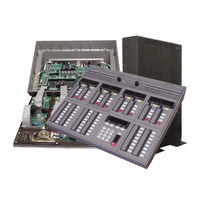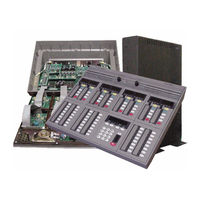
Motorola COMMANDSTAR LITE Manuals
Manuals and User Guides for Motorola COMMANDSTAR LITE. We have 2 Motorola COMMANDSTAR LITE manuals available for free PDF download: Installation And Troubleshooting Manual, Operator's Manual
Motorola COMMANDSTAR LITE Installation And Troubleshooting Manual (240 pages)
Brand: Motorola
|
Category: Network Hardware
|
Size: 15 MB
Table of Contents
-
-
Updates17
-
General19
-
-
Introduction39
-
-
-
Introduction61
-
-
-
-
Introduction94
-
Method 197
-
Method 297
-
0-Time Mode97
-
1-Set Time98
-
2-Set Date99
-
3-Disp Level100
-
4-Led Level100
-
11-Prog Page101
-
12-Set Rad Vol102
-
13-Set Dial up103
-
50-Node ID104
-
51-S/W Number104
-
52-Dbase Rev105
-
53-Led Test105
-
54-Button Test106
-
55-Volume Test107
-
56-Sense Test108
-
61-Tone Test108
-
62-MIC Test109
-
63-Ptt Test110
-
64-Call dir Rx111
-
65-Call dir Tx112
-
68-Set Grant112
-
69-Tone to I/F113
-
70-Reset114
-
71-Set MIC Agc114
-
72-Paging Tone115
-
73-Serial Port116
-
74-MIC Input116
-
75-Slv S/W Num117
-
-
-
General120
-
User Interface120
-
Vendor Software123
-
Software Upload124
-
System Alarms125
-
General125
-
User Interface125
-
-
-
Quick Reference127
-
Radio Channels128
-
-
Appendix
135-
Settings135
-
Jumper Settings141
-
S2 Console ID142
-
-
Appendix
147
-
-
Advertisement
Motorola COMMANDSTAR LITE Operator's Manual (132 pages)
Brand: Motorola
|
Category: Controller
|
Size: 3 MB
Table of Contents
-
-
-
Introduction41
-
-
Mute Button44
-
Shift Button47
-
-
-
Introduction53
-
Alarms58
-
Alert Tones59
-
Alias Page60
-
All Mute61
-
-
Clear65
-
Intercom67
-
I/O68
-
Marker72
-
Monitor73
-
Patch78
-
Safety88
-
Site Control89
-
Speed Page90
-
Stat-Alert92
-
Queue93
-
Enter RAC94
-
Manual RAC95
-
Radio Check96
-
Radio Enable97
-
Call Alert99
-
Voice Alert100
-
-
Call Release103
-
Hold Function103
-
Flash Function104
-
-
-
Introduction109
-
Buttons109
-
Programs112
-
-
Glossary
119 -
Index
125

